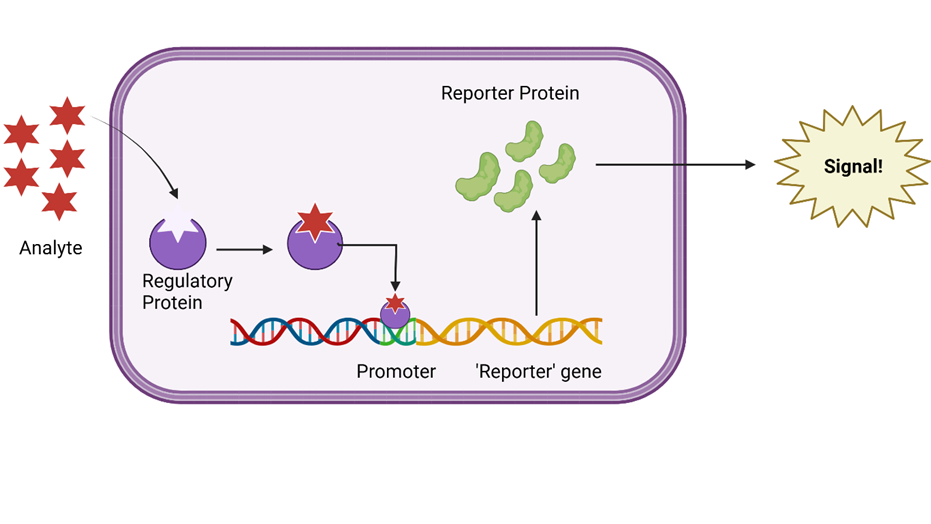As a natural sciences student, my degree is all about interdisciplinary science. I’m currently taking a third-year microbiology module, so when I found out I could write this blog on any subject related to engineering replacement body parts I was determined to find a link between my fascination with microbiology and an application to human health.
Using bacteria in biosensors
During the two lectures on sensors an ‘artificial pancreas’ was discussed, which combines a blood glucose sensor with an insulin delivering device to precisely monitor and modulate the blood glucose concentration in people with type I diabetes. This innovative technology inspired me to investigate if there could be a link between biosensors and microbiology. I quickly found an article describing bacteria biosensors. Bacterial biosensors, known as whole cell bacterial biosensors (WCBBs), work by utilising bacteria’s natural system of recognising a molecule and responding to it by producing a protein. The biosensors use genetic engineering (GE) to engineer the bacteria to recognise specific molecules and produce specific reporter proteins in response. These reporter proteins then act as a signal for the presence of the analyte which can be detected by a computer interface.

Bacterial biosensors in practice
These WCBBs are useful in a biomedical setting, allowing the detection of molecules which may be indicative of disease, such as WCBBs which can detect cancerous DNA. However, for these biosensors to work, they must have access to the body. Engineers at MIT have developed an ingestible bacterial biosensor capsule, which they hope will soon be clinically applicable, allowing the continuous monitoring of gastrointestinal health over weeks. Therefore, through the collaboration of biological and material engineering, these MIT researchers have facilitated the use of these biosensors in the body.
The debate surrounding genetic engineering

GE is often a controversial topic, with negative media coverage most commonly against genetically engineered crops. The main concern is the effect of GE species in the event of their uncontrolled release into the environment. Professor Caroline Ajo-franklin, who runs a biosciences research group at Rice University developing WCBBs, describes the need for tactics to prevent such an environmental release of GE microbes through physical containment. Overall, I believe that using proper regulation to perceive and mitigate risks, GE is a clear force for good in biomedical research. The discussion surrounding GE and the prevailing public scepticism towards it also highlighted to me the need for effective communication of research to the public, and the importance of open debate of new technologies and there applications.
The importance of seemingly unimportant links
What struck me most whilst researching this topic was the variety of bacterial use in engineering replacement body parts, with the WCBBs discussed above only a tiny snapshot of potential. I could have written about the use of bacterial biomolecules as biomedical scaffolds for human organ tissue culture, or the use of algal cells to help restore a man’s vision, or the complex role of the gut microbiome in our health. However, much like the word limit of this blog, the world of science research is limited by resource availability and funding. It’s impossible for a researcher to explore every rabbit hole, which is why I believe that interdisciplinary collaboration is integral to the future of all areas of research, and it may be the links between seemingly unrelated subjects which drive future technological breakthroughs.
Very well written, with an excellent format and images. You’ve included interesting statistics and related it to personal ideas which…
This is a very well written blog, the format is as if you are talking directly to me. The ideas…
Love the Batman GIF :)
This is an excellent, well written blog. The narrative is engaging and easy to follow. It could be improved by…
This is a well-communicated blog. The it is written well with good use of multimedia. It could be improved with…